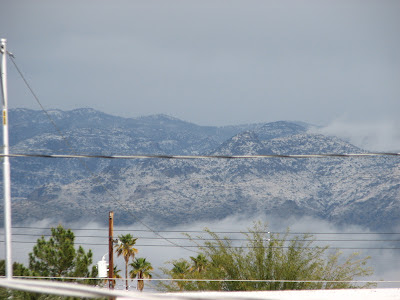A local middle school gardening club lead by one of its teachers has experienced a lot of success in producing food for students and teachers alike. This gardening club not only grows winter veggies but lives on the edge by growing summer veggies too. Below are some recent pictures from this lovely garden.
|
| A well-kept Tucson Winter Vegetable garden. |
Growing summer varieties in the winter is not for the faint of heart. Some individuals who live near trees or have some other safe place to grow more temperate vegetables can take more risks than the rest of us can. Often such individuals use trees, walls, houses, and others nearby structures as heat reservoirs. Growing tomatoes out in the open in February is not worth the work for me. Saying that, there are some gardeners here in Tucson who can – and do. They gamble their crop for bragging rights of having tomatoes in March or April.
 |
| February Tomato Blossoms. |
 |
| A tomato plant producing tomatoes into February. |
 |
| Large Indeterminate Cherry Tomato Plant in February |
Broccoli is grown by many gardeners here in Tucson, though – despite having a picture of me with broccoli for my avatar – I do not grow it much because I am not willing to nurse it through the late summer or pay for starts in the fall. My attempts at broccoli starts have failed so many times that I have removed broccoli from my crop rotation all together.
|
| Beautiful Blossoming Broccoli |
I grow some artichokes, but mine have never grown this big. It helps if you grow it over multiple seasons.
 |
| If you leave them for a while, Artichokes can grow quite large |
Many Tucsonans gobble down chilies, though I know very little about them. I have a pretty Caucasian background so I am only guessing when I say this is a picture of a Chiltepin pepper.
 |
| A Chiltepin pepper - I think |















